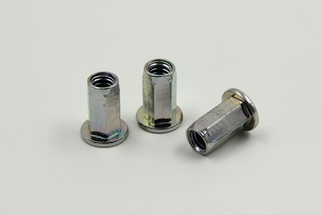




















NEWS

Stainless steel rivet nuts, also known as rivet nuts, are widely used in the market for furniture and decoration. The stainless steel rivet nut is developed to solve the shortcomings of thin metal plate, thin tube welding nut, and easy to slip internal thread. Stainless steel rivet nut does not need to tap internal thread, no need to weld nut, riveting, high efficiency and convenient use.
The stainless steel rivet nut can be riveted to a single sheet, or the two sheets can be riveted together, both as rivets and nuts; it is also suitable for closed workpieces that can only be operated on one side. In addition, for light metal workpieces that require threaded connections, stainless steel rivet nuts are compact and easy to use.

Types of stainless steel rivet nuts: flat, small, hexagonal, semi-hex rivet nuts, with through holes, blind holes, knurled and without knurling.
Stainless steel rivet nuts are widely used in shipbuilding, vehicles, aviation, electrical appliances, instruments, metal cabinets, elevators and other industries to connect the plates, easy to operate, reliable connection, beautiful, low cost and high efficiency. The deformation of the stainless steel rivet nut is similar to the bulging deformation process of the simple piece or the bureaucracy, and the degree of bulging deformation is generally expressed by the bulging coefficient.
Since the stainless steel rivet nut is deformed by applying axial pressure to both ends thereof, the force is better than the bulging shape in which the radial pressure is applied to the simple member or the tube. After the riveting of the stainless steel rivet nut, the length will be shortened, and the amount of shrinkage is related to the plasticity and size of the material. In order to prevent the bulging coefficient from exceeding the allowable value and causing cracks in the bulging shape, it is necessary to control the amount of shrinkage.